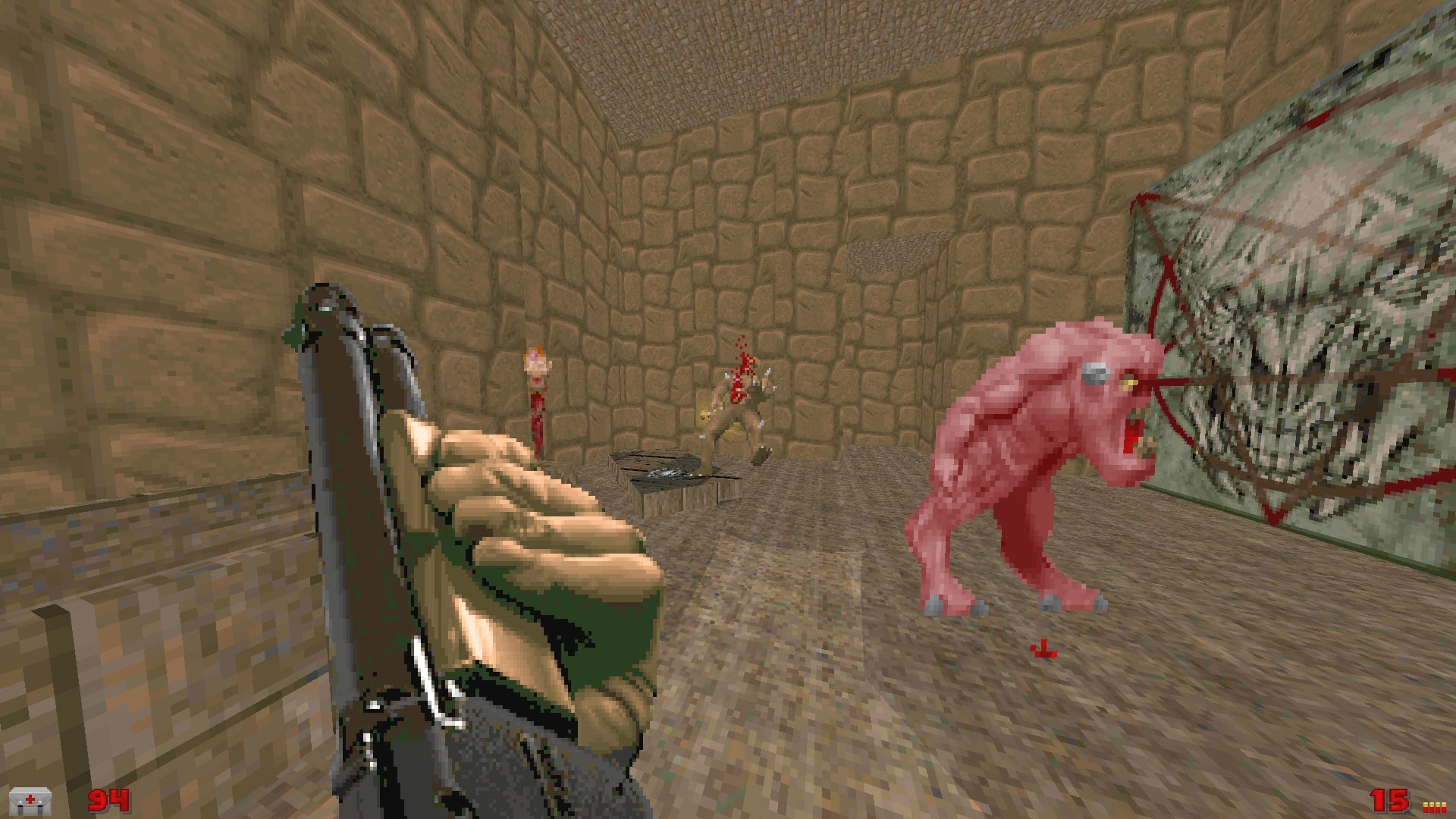Story Highlights
- Microtransactions have been around in some form or shape since the start of gaming.
- The mechanic debuted its current iteration in a mainstream game for the first time in 2006’s Elder Scrolls IV.
- Since then, companies like EA have made it a big part of their games and have changed them to employ this mechanic.
- Single-player games are also affected by this feature, with many getting completely reworked or changed to accommodate microtransactions.
- Studios have ruined themselves, and many games chasing this trend, but, even though they are less annoying than before, microtransactions aren’t going away any time soon.
Like any form of entertainment media, discourse is essential to the gaming world. From arguments about genres to video game companies, the debates are never-ending and will forever stay in this medium. Among these popular topics of discourse, microtransactions always remain relevant in the industry. Whether a game has this business model or doesn’t employ it, there will always be discussion regarding this facet of gaming.
Also called mtx, microtransactions allow users to purchase virtual items through real-world money. Mostly, this mechanic is present in free-to-play titles as an alternate source of income. No platform of gaming is abject from it and for the most part, this business model only lets you obtain cosmetic items that don’t have any real bearing on gameplay.
However, some titles, known as “free-to-play” games, give players advantages through microtransactions and that is where the problem begins. Through items like “loot boxes,” users can receive stuff that gives them an edge over other participants during the game. Such titles have become an essential part of the gaming ecosystem in the modern era.

From Call of Duty to Overwatch 2, innumerable mainstream AAA games use this mechanic extensively. Some titles like Resident Evil 4 Remake have even gone as far as to include microtransactions sometime after launch. Battle Royale games like Fortnite and Apex Legends have further popularised this business model through their success with Fortnite earning billions almost every year.
To be fair to these online games, the mechanic doesn’t give players any real advantage and only contains cosmetic material. But, seeing the relevance of microtransactions in modern gaming, the question does come up in our mind, when did this business model really start?
The History Of Microtransactions
Well surprisingly, it has always been a part of the gaming industry in some shape or form since the start. Arcade games were only profitable because of this model and were designed by developers to rake in your money who made the levels almost unplayable. Furthermore, arcades were one of the only ways to access games back then. Hence, if you think about it, this form of microtransaction was more unfair than the one in modern gaming.
As we all know, by the late 1990s, PCs and consoles came into the mix and started to replace arcade gaming. Now, players could buy video games for a certain amount of money and hold on to them for eternity and no longer needed to go to an arcade to play games. But, this didn’t end the cash-grabbing at all, it just shifted to a new medium.
For example, Doom was one of the biggest games of the early console/PC era. It basically introduced the world to the first-person shooting genre and is basically playable on anything in today’s world. And, this generational game is a quintessential example of the new shape microtransactions took. After its release, the FPS title got additional levels in the form of a post-release content pack.

Titled “The Flesh Consumed,” this episode introduced fresh new levels and was also a part of the Ultimate Doom bundle. Many other games of this era received similar treatment with additional content being part of a pricier edition. Unlike modern games, however, these levels were not available to purchase separately and were only part of special or exclusive editions.
Therefore, older players were forced to upgrade if they wanted to play more. When you look at it from this angle, this form of microtransactions does seem worse than the modern version. Whatever the case, this rough form of additional paid content led to the modern version of DLCs and expansion packs. Developers like Valve used this model in legendary games like Half-Life 2, popularising it alongside Bethesda and Blizzard.
Nowadays, this way of adding new content to existing games is commonplace and helps boost sales years after release. Hence, this is one other way in which microtransactions developed in the gaming industry. But, what was the first ever game to really employ this mechanic in its present form?
Elder Scrolls IV Introduced The World To Microtransactions
Microsoft was the first major company to talk about the concept of microtransactions back in 2005. It marketed this mechanic as an alternative means of profit for the publishers and developers. At the start, the American tech giant slowly started applying this business model in its video games. Rare’s Kameo: Elements of Power was amongst the first Microsoft titles to employ microtransactions.
It offered players a winter-themed outfit for $2.50, which many did not think was a fair price. Next up, Microsoft introduced new maps for Perfect Dark Zero and purchasable cars in Project Gotham Racing 3. As one would expect, fans didn’t really warm up to this new business model very quickly. But, Microsoft achieved its main goal, which was to show that microtransactions could be a part of video games.

Bethesda’s Elder Scrolls IV was the first major AAA title to bring microtransactions to the mainstream. A month after the game’s release in March 2006, the developer offered players a cosmetic upgrade for their horse. This specialized armor for your horse was available for either $2.50 or $1.99 on PC. As you might expect, player reaction wasn’t the best to this new feature.
Surprisingly, players didn’t find many problems with the introduction of paid downloadable content to the RPG. Rather, it was the price of this cosmetic item that didn’t bode well with the fan base. Many thought that paying for such items wasn’t a bad idea, but that the cost was absurd. The price disparity between the PC and console versions of the armor also didn’t sit well with Xbox fans.
Electronic Arts Extensively Used Microtransactions In Its Games
Fast forward to a few years later, and microtransactions were becoming even more commonplace in gaming. And, at the forefront of this revolution was the company notorious for this practice, Electronic Arts. Since it introduced the online store in The Sims 2, the American company hasn’t looked back on employing these mechanics in games.
Probably, the biggest asset of EA in this regard is its FIFA series of football simulation games. The publisher earned a whopping 29% of its revenue in 2020 through microtransactions in FIFA’s Ultimate Team alone. To put this into context, one single mode in a video game brought in billions for the American game developer. But, this is just one example of EA’s push for microtransactions among a myriad of titles.
From Madden NFL to even games including The Simpsons, the gaming giant has involved microtransactions almost everywhere. Probably the most notorious example and biggest failure of this method is 2017’s Star Wars Battlefront II. The game was the subject of universal criticism despite being a great product just because of its loot boxes. If purchased, these microtransactions would give players a significant advantage over others.

As you might expect, the fans did not like this one bit and hounded out EA to make changes. The company’s response to angry players on Reddit regarding this is still the single most down-voted comment in the site’s history. But, the publisher eventually realized its mistake and patched out the microtransactions over the years. Unsurprisingly, this actually made Star Wars Battlefront II a success as it gained dozens of new players.
Microtransactions Changed Beloved Titles Like Overwatch
Blizzard announced Overwatch for the first time in 2014, and it was all the hype. Everyone, from celebrities to players and even high-profile billionaires like Elon Musk was talking about the game. It was going to be the next big thing in gaming and rightly so, but with one big drawback of microtransactions. Even though players could only really buy loot boxes with cosmetic items through mtx, fans still didn’t like it.
You could just earn the cosmetics by grinding instead of spending real money and, considering the $40 price tag, fans were not convinced about the microtransactions. Somehow, Blizzard saw the backlash and made its sequel even worse. Overwatch 2 just came out recently in 2022 and was free-to-play, unlike its predecessor. It also had no loot boxes and replaced this with a battle pass system.
Even though it seems like an improvement over the 2016 game, it was actually the opposite of that. In Overwatch, you could earn the skills in loot boxes by just grinding in the shooting game. However, the sequel made this much harder, and some legendary skins were only available through microtransactions. Therefore, you had no choice but to dish out money to really enjoy the title.
You might be thinking it can’t get any worse, but it does. Blizzard also shut down the servers of Overwatch 1, meaning if players hated the new game, they couldn’t go back to the original. Microtransactions won again and made a studio change a lovable game and even cancel one just to make more money.
Single-Player Games Also Face The Brunt Of Microtransactions
Multiplayer games aren’t the only genre in the industry that microtransactions have impacted. Dozens of single-player titles have been changed or reworked in major ways to fit in microtransactions. The biggest example of this is probably the development of Dead Space 3 by Visceral Games. Ben Wanat, the director of the game, and Visceral wanted to return the franchise to its survival horror roots. But, EA had other plans for the game.

Instead of letting the developer make an action-horror game rooted in survival, the publisher made them shift towards a more action-oriented direction. It wanted mainstream trends in Dead Space 3 and as a result, also added microtransactions to it. Visceral had to completely rework the game from its initial vision to fit in microtransactions and were making a game they had no experience in.
Therefore, the 2013 title was nothing like the developer wanted and was a horrific mesh of opposing ideologies. Players could just buy high-quality weapons with real money instead of grinding for them in-game in Dead Space 3. Due to this major shift from the franchise’s core and the addition of eccentric ideas, the game performed below expectations.
Critics and fans alike also criticized the microtransactions in the action title, with many saying they were “unwelcome.” The worst part of this, however, is that EA didn’t take the brunt of this criticism, Visceral did. The American video game company shut down the studio in 2017 after the failure of the game and Dead Space became lifeless until 2023’s remake.
Therefore, chasing microtransactions and modern trends completely ruined a talented game developer. Other games like Middle Earth: Shadow of War are also examples of how much this business model has impacted development. Due to the overwhelming backlash to the microtransactions in the game, Monolith Productions had to completely rebalance the game post-release.

The developer worked for a year after release to remove microtransactions in their entirety from the RPG and allocate the nemesis system to make grinding easier. All in all, this affected Monolith heavily and the game’s secret ending being behind a paywall just made everything worse. Hence, microtransactions have only made development worse for studios due to their complexity.
Takeaway
Nowadays, many major AAA single-player games like GTA V, Diablo Immortal, Gran Turismo 7, Assassin’s Creed Valhalla, and Marvel’s The Avengers use this business model. And, if we are being honest, we won’t see game developers remove this anytime soon. Diablo Immortal was criticized to hell and back for microtransactions when it came out last year.
But, it has made over $300 million since its release solely through the gaming world’s most hated mechanic. The long and short of it is, the players pay for microtransactions, and as a result, studios incorporate them. Until we keep throwing money at Deadpool skins in Fortnite, nothing will really change. But, all isn’t so bad, the state of microtransactions is much better than before due to all the backlash.
Many of the more recent GOTY contenders like Elden Ring, God of War Ragnarok, and Star Wars Jedi Survivor don’t have in-game purchases. Therefore, all isn’t lost and until this business model doesn’t include gameplay advantages, it isn’t a huge bother. And, in a sea of options, you can just always skip the odd heavily monetized games.
Thanks! Do share your feedback with us. ⚡
How can we make this post better? Your help would be appreciated. ✍



